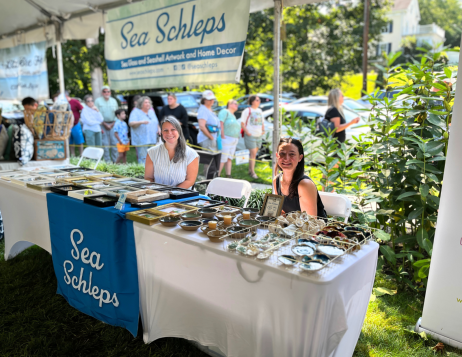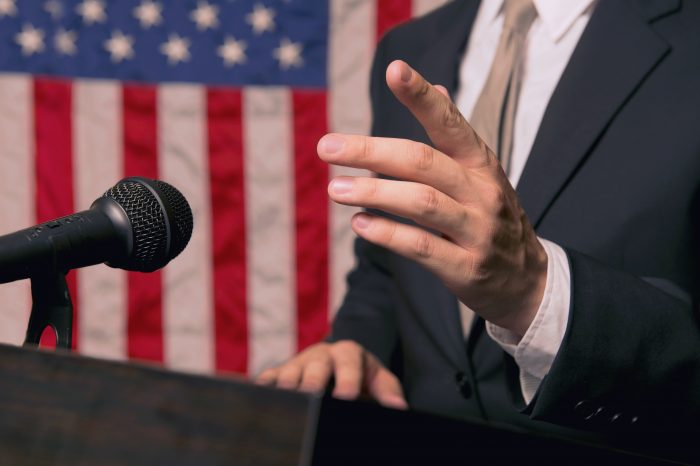By Daniel Dunaief
First responders who raced to the World Trade Center site on 9/11 or who helped with the massive clean up effort did so at risk to themselves.
That was as true during those days and weeks after the attack as it is now, with many of the first responders experiencing a range of diseases and conditions linked to the difficult work they did in 2001.
In a study released recently in the journal JAMA Network Open, Sean Clouston, Professor in the Program in Public Health and in the Department of Family, Population and Preventive Medicine in the Renaissance School of Medicine at Stony Brook University, showed that 4.6 percent of the responders in a study developed dementia. That compares with 0.5 percent for the general population of people who would develop cognitive declines in a similar age group.
Between November of 2014 and January of 2023, 228 responders without dementia and under 60 years old at the start of the study developed dementia over the next five years.
“It’s stunning to see these kinds of symptoms in such young people,” said Clouston.
Through the Stony Brook WTC Health and Wellness Program, Clouston and other researchers have documented some of the cognitive declines in this population, who likely inhaled the kinds of fine particulate matter that can enter the brain and cause damage even as the immune system fights to try to target the unwelcome contaminants.
“We assume this made it in the brain, but in such a way that it wasn’t overwhelming immediately,” said Clouston. “Once you get into a neurodegenerative space, most of these diseases take a long time to develop” with neurodegenerative processes sometimes taking decades to occur.
The exposure could have caused an immune reaction. They are not sure whether symptoms emerged because the reaction was stronger or if the symptoms developed because higher exposure triggered a stronger reaction.
“It’s like trying to fight a fire, and the truck rolls over a garden to do it,” said Clouston.
Fortunately, the brain has considerable redundancy, which makes it possible to reroute brain signals to compensate for problems. Over time, however, that ability might be damaged by that work or by the exposure.
Determining which particular chemical or chemicals causes the greatest damage is difficult, particularly because the collapse and burning of the buildings caused a heterogeneous mixture of so many industrial products to enter the air. It may not matter much, as any material in the brain could be a problem. The type of exposure may also affect the severity of the immune reaction or which parts of the brain are damaged.
Scientists suggest that some of the contaminants that have contributed to health defects may come from the various tools in offices, such as computers and air conditioners.
“As we go forward [with other studies], that will be a focus of ours, to see if we can’t isolate at least one or maybe a couple” of chemicals that could exacerbate the cognitive decline, Clouston said.
Different exposures
Clouston and his collaborators used surveys to find out exposure at the site.
Some of the first responders, for example, used face masks and wore personal protective equipment, including hazmat suits. The incidence of dementia among that group was considerably lower than it was for those who didn’t wear masks.
Five or six out of every 1,000 workers who wore PPE developed dementia, while those without protection developed cognitive decline at the much higher rate of 42 out of 1,000.
The researchers tried to address the possibility that those people who were masks lived a healthier lifestyle prior to 9/11 and may have already been less likely to develop diseases or health conditions.
“We tried to account for that,” Clouston said. In most cases, people aren’t avoiding the kinds of activities or decisions that likely contribute to dementia, such as diet and exercise, which, the general population “widely ignores already,” he said.
Additionally, while a family history of dementia or other medical conditions mattered to some degree for the reported cases, they weren’t sufficient to invalidate the statistically significant result.
To be sure, Clouston acknowledged that the study could have a screening bias, as cognitive evaluations every 18 months likely far exceeds how often most people in the same age group receive testing for their mental acuity.
This is one reason they developed a minimally exposed group that could account for that bias. In that group, dementia was close to, but still higher than the expected rates for the general population.
The number of first responders with dementia far exceeded this group.
Other health threats
Medical professionals have been studying the impacts of other events that release aerosolized particles that could be hazardous to people’s health and could damage the environment.
Burn pits, which the military used in Iraq and Afghanistan, among other locations, contributed to cancers and other diseases among members of the military serving overseas.
Natural disasters, such as the Maui fire last August that not only burned through forests but also destroyed commercial buildings, also create a hazard.
People fled the fire quickly and then returned to search for their loved ones, Clouston said, which exposed them to aerosolized dust.
It would be “good to think about studies to consider risk of dementia” from these events, he added.
“These studies would probably take a while to complete as the risk grows with time and with age.”























